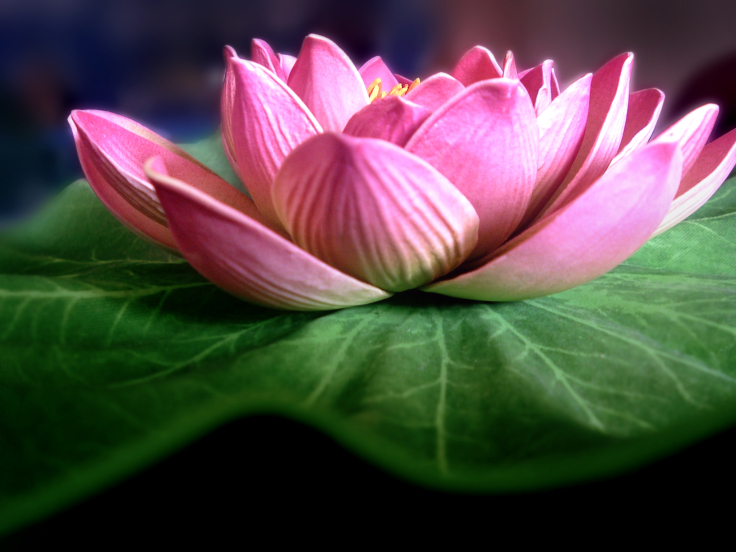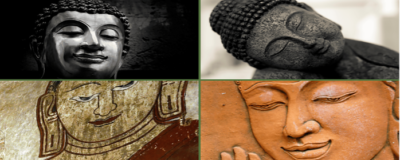
Guided imagery is a dynamic process.
It’s where you use your imagination purposefully to help your mind and body relax, heal, or strengthen themselves on different levels.
By envisioning a particular scene, sound, or experience, you can evoke physiological and emotional responses that mirror actual experience.
What’s less known is how it can be a potent tool for spiritual development.
Now, spiritual growth is a broad term that can mean different things to different people.
It’s about expanding your understanding of yourself and your place in the cosmos.
It’s about connecting deeper with the essence of your being and building a sense of harmony with the universe.
There’s a rich history of visualization practices across various traditions, but there’s something special about how they intersect with spiritual practices, particularly those alluding to Buddhism.
It’s not about adhering to a religion; it’s about using similar meditative frameworks to foster inner peace and spiritual insight.
The Role of Guided Imagery in Buddhism
Imagine, for a moment, a technique that calms your mind and deepens your spiritual roots.
Guided imagery in Buddhism does just that. It’s like a bridge connecting the peace of a still mind with the depths of spiritual understanding.
Buddhist teachings have long embraced the power of visualization.
They consider it an essential tool for cultivating heightened awareness and compassion.
When you meditate on images of serene landscapes or enlightened beings, you’re not just daydreaming.
You’re actively engaging your mind in a practice that fosters spiritual growth.

One key Buddhist concept is cultivating an ‘inner temple’ where practitioners can retreat mentally.
This safe haven is created through guided imagery.
By visualizing a peaceful and sacred space, you establish a mental sanctuary that can be accessed anytime for solace and reflection.
The Buddha himself offered a variety of visualization techniques intended to enrich meditation.
These could range from imagining the life cycle of a lotus flower, representing purity and enlightenment, to contemplating a mountain’s steadiness for grounding and stability.
Such images stimulate not only a meditative mindset but a profound inner transformation.
Incorporating elements unique to Buddhism, like the ‘boundless heart’ meditations, further extends the practice.
Here, guided imagery propels the development of universal love and kindness by picturing oneself in harmony with all living things.
This fosters a deep connection with the interconnectedness of life, an essential feature of Buddhist spirituality.
How do you start a practice that not only relaxes the mind but also nurtures the spirit?
Designing a guided imagery practice with roots in Buddhist principles can be a methodical process that offers profound results.
My aim here is to share a structured approach to creating your own sessions that blend meditation’s calming aspects with Buddhism’s spiritual insights.
The first step is setting a clear intention.
Ask yourself what you hope to achieve. Whether it’s greater compassion, increased awareness, or a deeper sense of peace, your intention is your guidepost.
Next, create a space that minimizes distractions and promotes tranquillity.
This could be a quiet corner of your home with cushions or a spot in nature where you feel connected to the earth.
Designing your session involves choosing a theme or subject for your imagery.

In a Buddhist context, this might involve visualizing a lotus flower representing purity or the calming presence of a bodhisattva.
Use simple and direct language to form mental images, relying on sensory details — consider the lotus’s colour or the gentle voice of the bodhisattva offering wisdom.
Mindfulness is the anchor of your practice.
Maintain present-moment awareness throughout, gently acknowledging and then releasing any intrusive thoughts.
If your focus drifts, compassionately guide your attention back to your imagery. Embrace compassion for yourself during this process — don’t be hard on yourself if your concentration wanes.
Remember, this practice isn’t a one-off. Like any skill, it grows with regular practice. Incorporate your guided imagery sessions into your daily routine for the best results. Over time, they should evolve into a seamless part of your spiritual journey, fostering insight and peace in everyday life.
Deepening Spiritual Connections through Guided Imagery
Guided imagery isn’t just about relaxation.
It’s a bridge to deeper spiritual understanding, one that Buddhism often paints with the colors of empathy and interconnectedness.
For a moment, imagine figures and symbols that hold profound meaning in Buddhist thought – the lotus, the Bodhi tree, or the serene smile of a Buddha statue.
Engaging with these during meditation offers more than focus – it’s a gateway to a deeper spiritual connection.

This deepening of spiritual ties is not without significant personal transformations.
Brought to life in the mind’s eye, these images can help cultivate a sense of oneness with the world, fostering compassion that extends beyond the self.
This boundless empathy is the cornerstone of Buddhist teaching, and guided imagery serves as an effective tool to embroider this quality into the fabric of everyday life.
Consider the stories of individuals who’ve found comfort and guidance through visualizations.
These aren’t just tales to be heard; they’re experiences to be lived.
They illustrate how a conceptual understanding of spiritual teachings can evolve into an intimate, personal, and vivid insight.
And it’s these insights that often lead to a life more aligned with Buddhist principles of kindness and service.
As you move to advanced concepts, remember that the images and scenarios during your practice reflect your inner world.
Next, elements like ’emptiness’ and ‘interbeing’ are challenging yet rewarding concepts that can open you to a new dimension of spiritual experience.
Advanced Concepts and Techniques in Buddhist Guided Imagery
Embracing the concepts of ’emptiness’ and ‘interbeing’ in a guided imagery session can profoundly deepen one’s spiritual journey.
In Buddhism, understanding the nature of emptiness doesn’t mean seeing the world as void but recognizing the interconnectedness of all things.
When I practice advanced visualization, I contemplate this interconnectedness, fostering unity with the universe.
Buddhism offers a vast array of visualization techniques to refine awareness and concentration.
For instance, I might visualize a lotus flower opening its petals to represent the unfolding of wisdom or imagine a tranquil lake to reflect the calming of the mind.
These techniques are more than just exercises; they’re tools for cultivating the qualities needed for spiritual growth.
The ultimate goal is to integrate these advanced guided imagery concepts into everyday life.
By bringing mindfulness to daily activities, I transform ordinary moments into opportunities for spiritual development.
Through consistent practice, guided imagery becomes not just a formal exercise but a living, breathing part of my spiritual life.


It is really funny how I came across this article. Before I start with my comment, I need to say that this article is enlightening and offers a fresh perspective on the power of the mind in personal growth.
I found the explanation of how visualization can connect us more deeply with our spiritual selves particularly intriguing. Why? because this is a practice that I do not for meditation, as I have tried meditation before and couldn’t make myself stick with the habit. This is a practice that I do to help me sleep.
I found that creating images stops my brain from thinking and creating self talk. Every night I have this mental fight between self talk and creating images, and I try to win by making imagery win.
My question is: can what I am practicing lead to the same results of creating imagery within meditation?
Hi Investor, thanks so much for this interesting comment. I’m glad to hear about your personal experience. It’s excellent that you can divert your negative self-talk by creating. Now, all you need to do is direct those creations towards the enhancement of your life every day! This is the essence of meditation, so don’t worry—you are already meditating.
You are the supreme ruler of your mind! So, through your thoughts and images, you can be anyone you want to be. Go beyond how society labels you – your assigned ID — and create your every life!!
Your may also enjoy: The Sacred Breath: Connecting to the Divine Through Every Inhale and Guided Imagery For Spiritual Development.
Blessings and Success. 🌺
Linden
Dear Linden,
I have always found Buddhism fascinating, and your insights on guided imagery for spiritual development truly resonate with me. The connection between visualization and spiritual growth is powerful, and it’s wonderful to see how practices like these can enhance our understanding of ourselves and our place in the universe. Thank you for sharing such valuable techniques and ideas to incorporate mindfulness into our spiritual journeys!
Best,
Opa
Wonderful! Yes, the Buddhist teachings are not religious because you are a Buddha in the making! We all are. There are no omnipotent rulers or kings. The teachings open your heart wide and dissolve all the fears the mind throws up!
The following might interest you:
Mastering Mindfulness: Overcoming Negative Thoughts for Wealth and Abundance
The Sacred Breath: Connecting to the Divine Through Every Inhale
Warm wishes and loving kindness
Linden 🌺